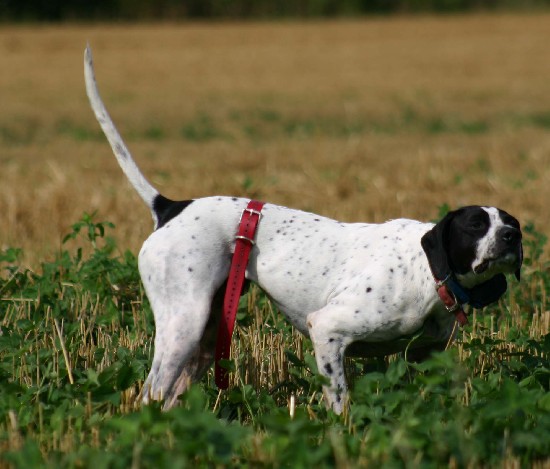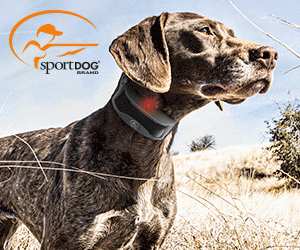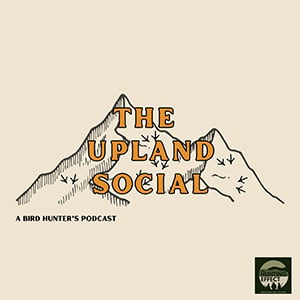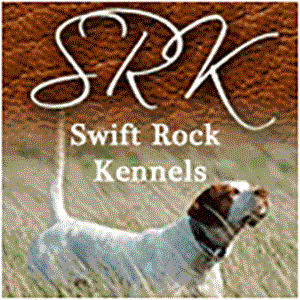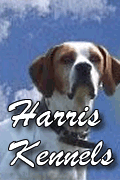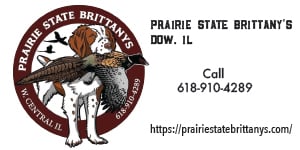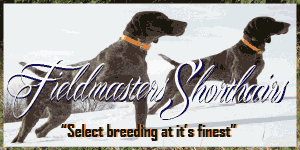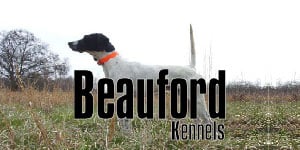Dogs Day
Dog Days
by Edwin Bolton
The maples and poplars explode in color as my feet crunch under the woodland forest in the early morning frost. Over the old crumpled rail fence of days gone by, the vines have lost their cover but fruit is plentiful. The sound of chickadees and bluejays are a warm reminder of winter months yet to come in the northern woodland forest. My male setter (Bandit) surges ahead in the underbrush as his bell is faintly heard, while my two females search out a clump of alders reassuring their quarry. The bell falls silent as the females pick up the pace, in anticipation of their final just reward. I move closer to the silence when the two females slam on point honouring Bandit twenty yards ahead. The summer months of training are now being rewarded as I slide across in front waiting for that explosive but silent flush. As the wild woodcock takes flight dodging alders, brambles and falling leaves, I drop him as he slides past a wild raspberry bush. I look back to see all eyes waiting for direction and realize the female furthest behind was the only one to see my quarry fall. Holding my hand up and calling the female to retrieve, the others stand at attention watching every move. With the first bird in the bag, my long hours of training have been rewarded.
.
I have to admit, after twenty-five years of hunting upland game, running a game preserve and dog-training business, we have come far. In 1985, at the ripe old age of twenty two and acquiring my first bird dog, (a solid liver German Shorthair Pointer) and starting a pheasant hunting club in Southwestern Ontario, I gathered all the information I could learn from books and VHS tapes to begin training. Bird dogs did not run in our family, so my learning curve was a hit-and-miss process. Joining the local North AmericanVersatile Hunting Dog Association (NAVHDA) club and getting my green book, in addition to clients that hunt at our club, I thought dog training would be a breeze. A breeze it was, if you consider as a German Shorthair Pointer running by you in full stride and out of control! For years I thought the game was yelling and screaming with the whistle thrown in, shuddering its tone. I now had a bird dog that found birds, retrieved and ran from one end of the field to the other as I followed along. I was just like everyone else that had a dog who hunted five to ten times during the year and was put away until the next hunting season. I was fortunate having many of the breeds, German Wirehaired, Gordon Setters, Labs, English Pointers, Springer Spaniels and now the breed I keep and run - the majestic English Setter. Up until 2005, as long as my dogs had basic training in obedience, could search and point or flush, I considered myself a pro, winning my share of Nation Shoot To Retrieve Association (NSTRA) trials in the early nineties.
In the summer of 2005, I was introduced to Rick Smith from Virginia, son of Delmar Smith from Oklahoma, who came up to instruct myself and twenty other guests the Silent Command System. Both Rick and Ronnie Smith teach the silent command system throughout the United Sates and Canada. Their approach to training was a great inspiration to us. "What do you mean you don't have to sceam at your dog to get him back in or under control, or blow a whistle until your throat went dry?" The simple approach of teaching an alpha dog without words seemed impossible. But if you think about it, you would never hear one dog talk to another in a pack. It is the body language of the alpha that determines their next move. Three basic commands that are taught are, "go with me","come to me" and "stand still". Once these three basics commands are drilled in their heads, we move to the field. The same principles are used, but under more pressure as we are not beside them but thirty to one hundred yards out. E-collars are then introduced, not to punish, but to stimulate the points of contact for the three commands we have routinely used in the yard. We take the basic silent command system and add other training ideas we've learned from days of past to make the successful hunt possible. WHAT A THOUGHT!
Related Aritlces
In the summer of 2002, I raised two 8-week of females GSPs, from weaned puppy to started bird dog. Beginning with their introduction to birds, gunfire and all the rest that goes with being a bird dog and culminating with a successful 4-day hunting trip to South Dakota in October just prior to their being shipped to Japan to be with their new owners. This project was alot of fun. I miss these pups alot, but I know that they are doing well due to the nice start I gave them. You can do the same thing with your young bird dog, it just takes time and patience. Of course you must remember the most important thing about making a bird dog...start with a bird dog!!
Continue Reading


